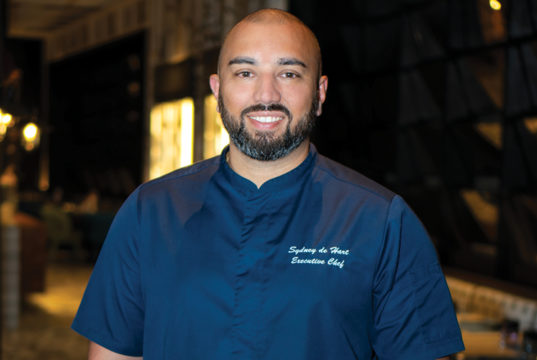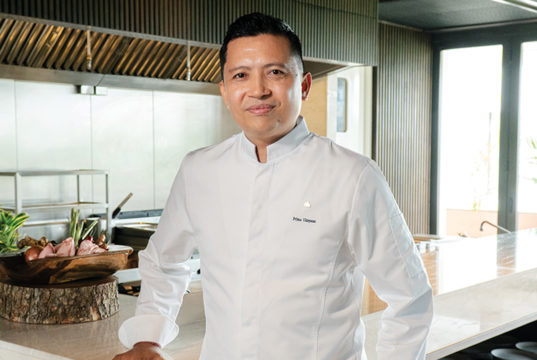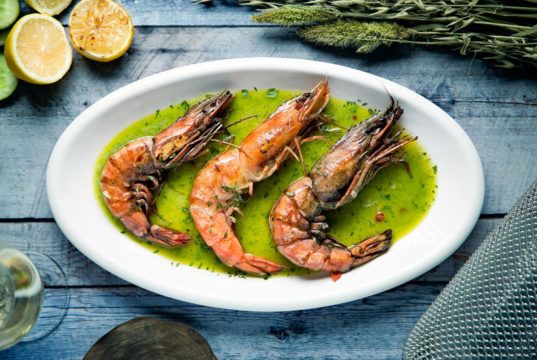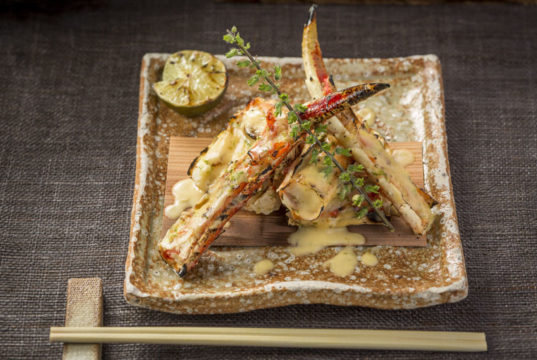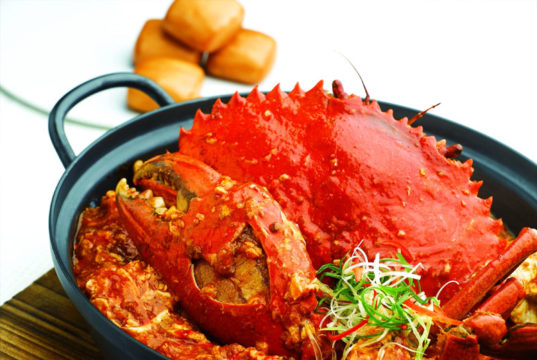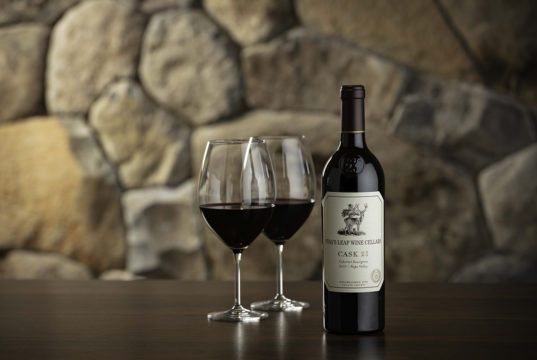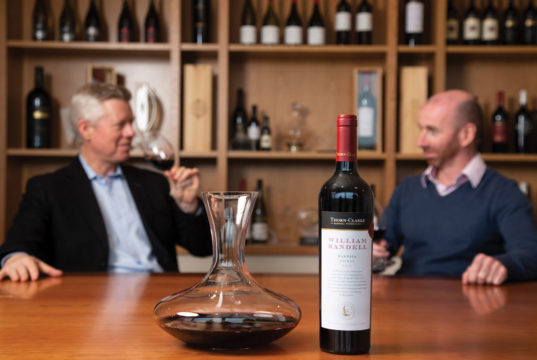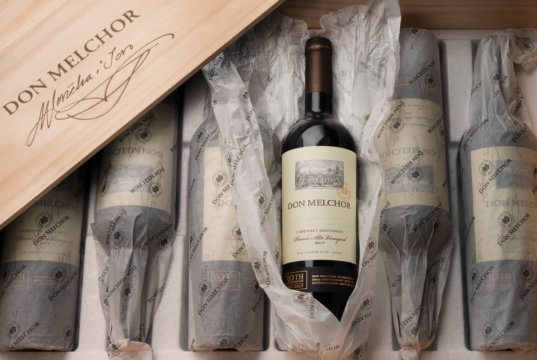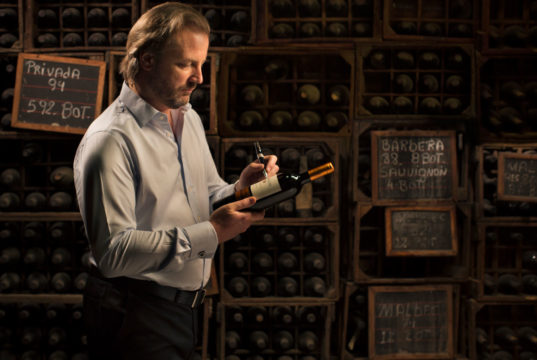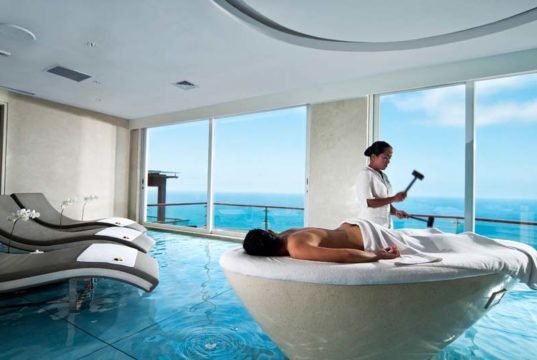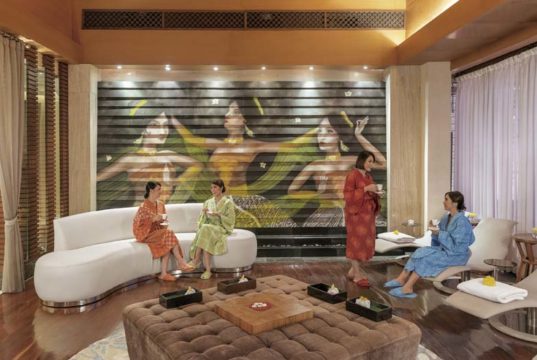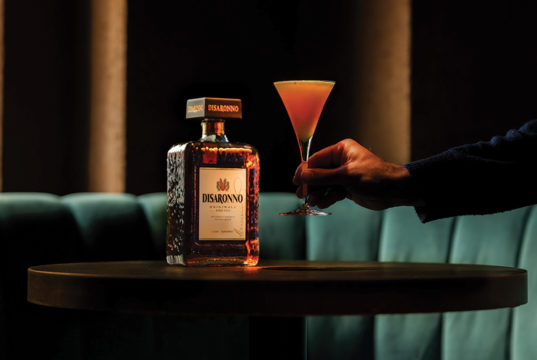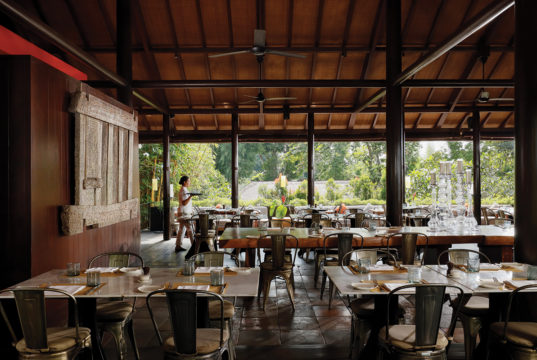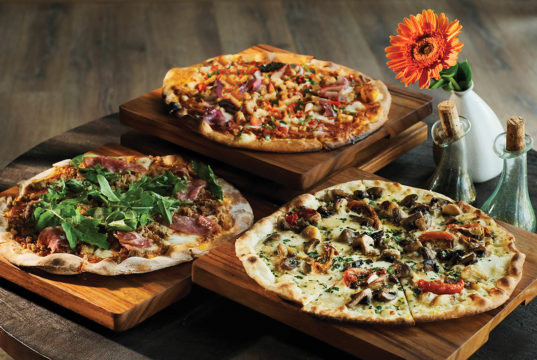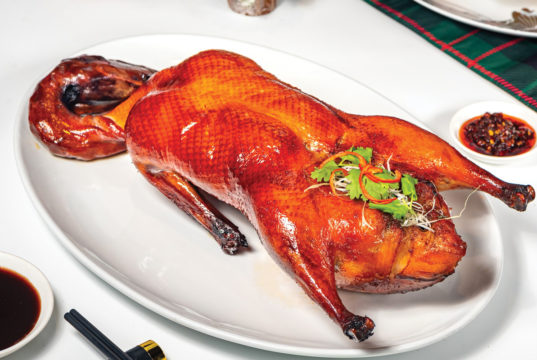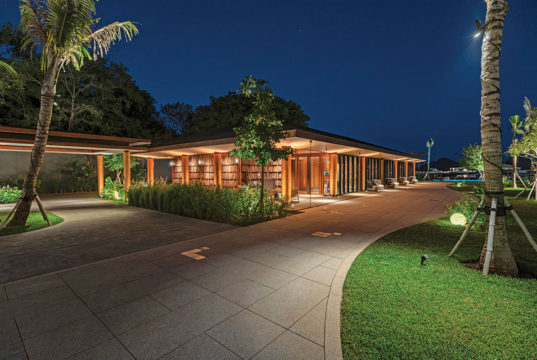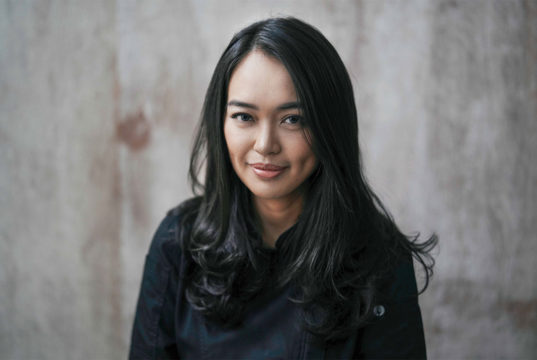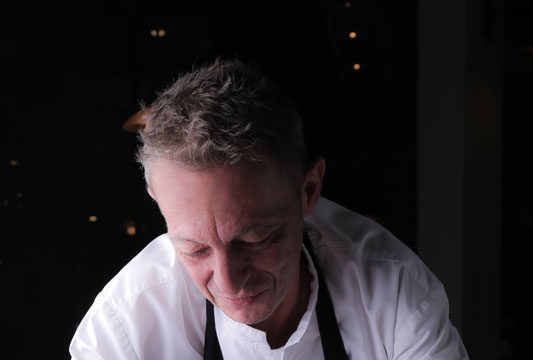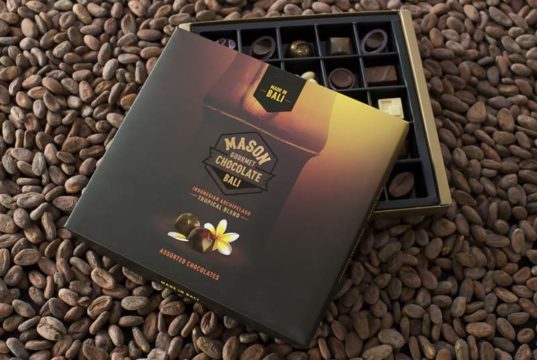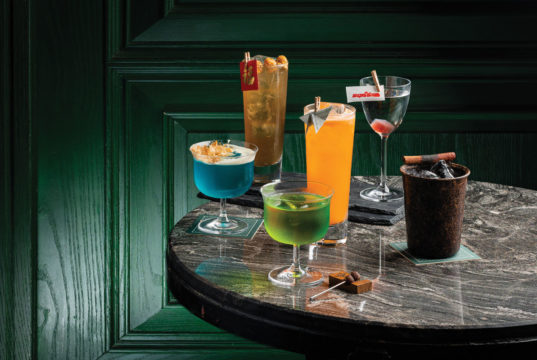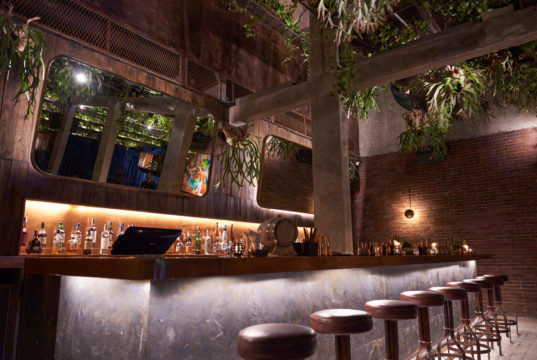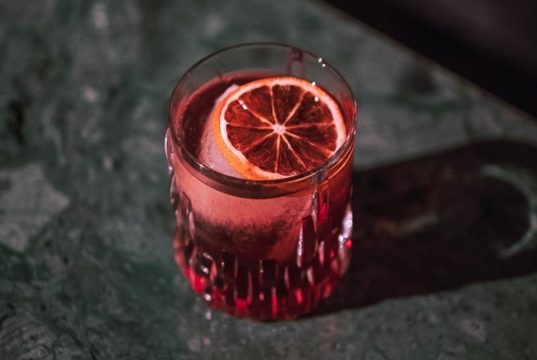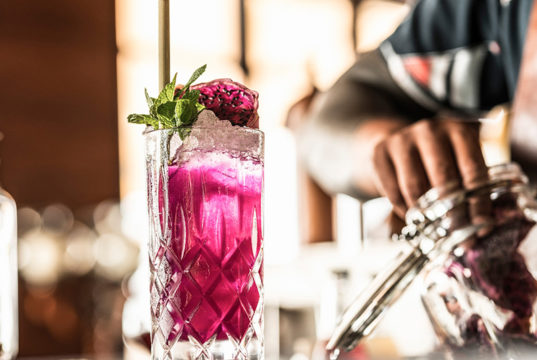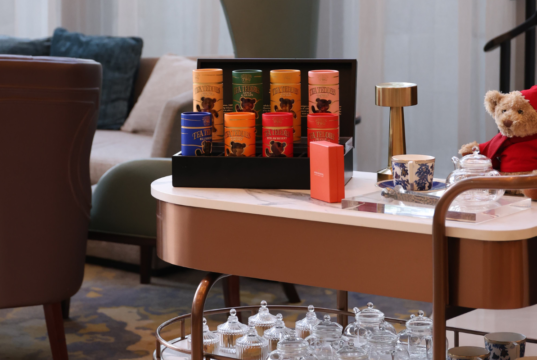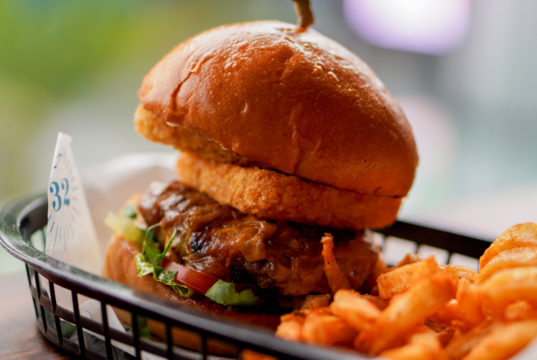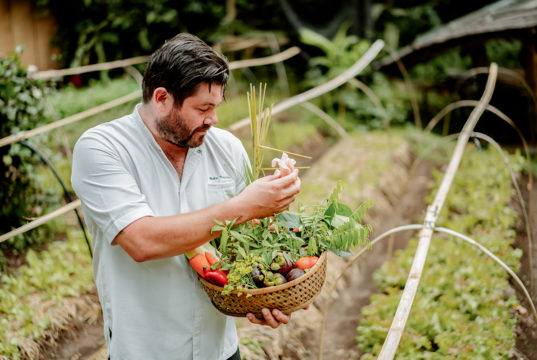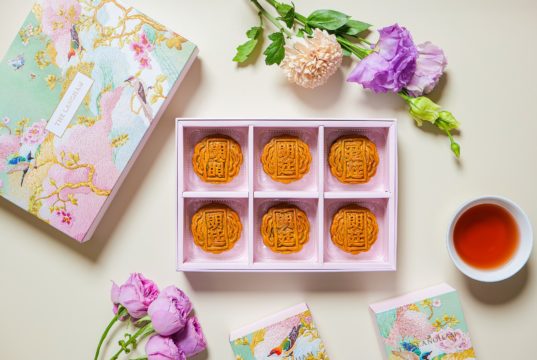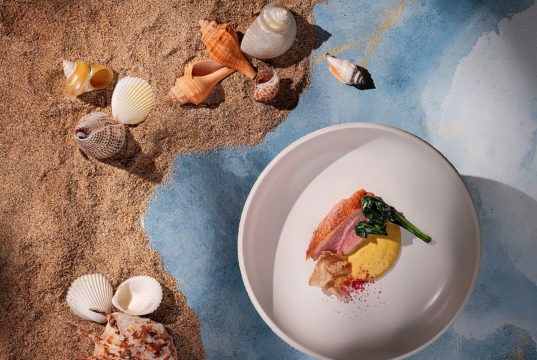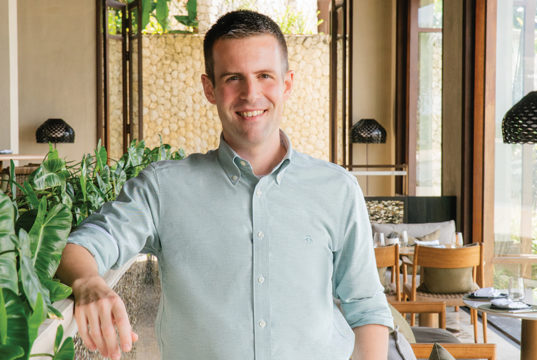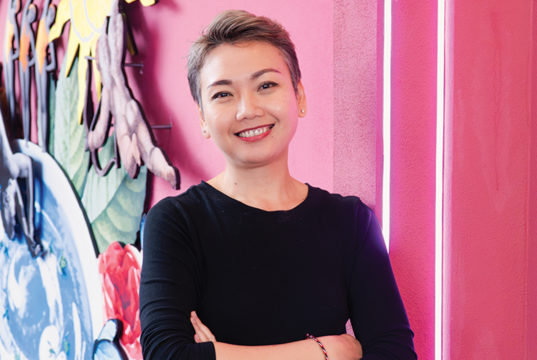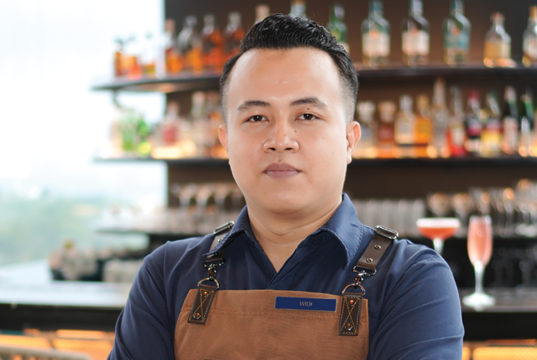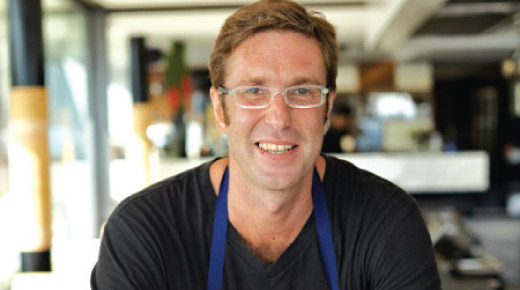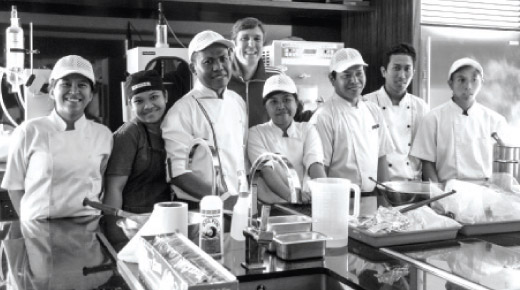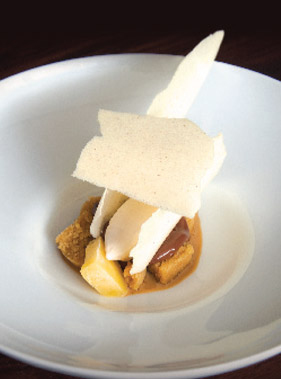Browse earlier editions of New York’s biggest gazettes and you will find review after review of Pastry Chef Will Goldfarb – the Empire State’s “Golden Boy” of desserts. He used to be as iconic to the Big Apple’s dessert scene as the New York cheesecake itself, but don’t get him wrong – he is far from a has-been, once-was chef. This cool and quirky New-Yorker is now the brains behind the ingenious desserts of Mejekawi – the gadget-packed laboratory-kitchen concept at Bali’s beloved beach club, KU DE TA.
Being in the public eye for quite some time, Will Goldfarb has picked up some interesting monikers along the way. Titles like “The Prince of Pastry” and “The Sultan of Sweets” are undeniably playful, and the royal theme is particularly relevant considering Will’s devotees and followers, both old and new.
But this chef hasn’t always had it so sweet. From the early days his bio reads a bit like a roller-coaster. He went from success to failure, rock-bottom to sky-high, until his big break finally came when he bagged the ultimate job that all chefs dream of: a position at the former elBulli. He went on to open his own dessert bar, Room 4 Dessert, to rave reviews from newspaper giants like The New Yorker and The Wall Street Journal.
But when Room 4 Dessert eventually closed after Will received a health shock, he finally made the move to the glistening shores of Bali. With the burning passion to start up another project coinciding with an empty space on the second floor of KU DE TA, Will proposed his idea for Mejekawi – an ultra-modern 24-seat laboratory concept, intoxicated by a chic design, avant-garde cuisine and desserts that have never been seen before.
Mejekawi is now one of the island’s best restaurants, and Will’s sweet creations have reached technologically-advanced heights. They are just as unique as his New York favourites, just as eye-catching and just as scrumptious, but they come with a number of added complexities and a whole lot of imagination.
I managed to catch up with the chef himself in between his meringue making to really get to know the “Golden Boy” of New York. Surrounded by his gadgets and his team of young, enthusiastic chefs, he talks me through his desserts at Mejekawi and how each one comes into being. He tells me about his love for Bali and the local ingredients, and why he has no plans to leave the island any time soon.
Q: Back in New York, you were one of the city’s most cherished pastry chefs, lovingly referred to as the “Golden Boy of Pastry”. Do you ever look back at your “golden” years?
A: New York is awesome, but I don’t miss living there. It was certainly the right thing for my career at that time because the city really tests you – it challenges you and you have to work very hard to make something of yourself. The people want to see you suffer a bit before you can become a “Golden Boy”! They want to see you bleed, they want to see you prove yourself. It’s pretty ruthless!
In fact, my first reviews in New York were terrible – things like “Beware” and “Only for the Brave”! I wasn’t sure if I could recover from that, so I packed up and left New York for a few gigs across America. After a few years, I finally decided to brave the big city once more. I opened my dessert bar, Room 4 Dessert, and the first review was, “All Grown Up”. When I finally got a great review in The New Yorker, I knew I’d finally cracked it. It’s normal to go through the fire a few times in New York, so it was nice to come out the other side. Bali doesn’t have that kind of hysteria yet, so I’m interested to see what I can do here.
Q: So what is it about desserts that encouraged you to keep going?
A: I’ve had a lot of joy in pastry, which made the lows worth it! And after working at El Bulli in Spain, everything jumped up to the next level. I just love the technical nature of desserts. I’m fascinated by them.
Q: Dessert doesn’t get much more technical than in Mejekawi’s laboratory. What’s your favourite gadget and how is it used?
A: To be honest, I’m spoiled for choice in Mejekawi so I have to name a few! Our signature pieces are the Wolf Induction Hobs and our Sub-Zero Freezers, but there are also a few other tools that are absolutely invaluable to what we do. Our Excalibur Dehydrator is vital for our meringue, our Irinox Blast Chiller freezes things to -38 in just a few minutes and our Henkelman Vacuum Sealer is the best tabletop vacuum machine on the market.
Then there’s our most unusual gadget – the Sonicprep PolyScience Homogeniser. It’s used to aerate, age, make vinegars, infuse flavours, tenderise and purée, simply by using sound. There’s no blades in it – instead of a cutter, it just emits sound. It’s very cool! Can you tell I’m a bit of a gadget-head?
Q: So is it all about gadgets for you or are there other, non-technical tools you couldn’t live without?
A: Oh of course, I couldn’t live without a spoon, a small offset spatula or my apron. I even travel with them!
Q: After so many years of creating desserts at the top, what process do you go through to create something new and innovative every time?
A: I’ve got a pretty straightforward process that hits four key areas: ingredients, technique, the idea, then the ‘X’. The X is the magical unknown thing where my inspiration comes from. My ingredients will always be grounded by local flavours, my techniques will always be cutting edge and my ideas will always be deep and meaningful, but the X is inspired by what else is going on around me. The best way I describe it is by comparing it to a fashion collection. A fashion designer has their own way of working, but then there is the world outside generating what is interesting that season – it could be a colour, a feeling or something in the movies. That’s kind of the same way my desserts come together. It always begins with a reason or an encounter, then it grows from there.
Q: And how quickly can you move through this process?
A: It completely depends. But the key is recognising when that moment comes – that moment when you have exactly what you set out to achieve. Sometimes it takes twice the amount of time you expected, and other times it comes half way through the process. For example, we started developing our meringue in 2012 and it’s only just on the menu – it’s now 2014! It was an ongoing experimental process. It took so long because we were aiming for a very low sugar, very flavourful meringue that has stability. That’s something quite difficult to make. I don’t know how many thousands of meringues we made, but we got a really good result, so it was worth it.
Q: Your desserts have been described as “quirky”, “eccentric” and “utterly genius”. How would you describe them?
A: I have my own criteria for what my desserts need to be. First they have to be delicious, then they must be beautiful, and finally, they have to be interesting. But I think we have our own style here at Mejekawi. The only way I can describe it is “experiential”. I’ve often been lumped into these “molecular” and “techno-emulsional” categories, but I’m not interested in all of that. For me, what we do is unique.
Q: So how do your desserts differ in Mejekawi to those you used to make in New York?
A: A big part of cooking is being aware of what’s around you. Obviously in terms of climates, we don’t eat the same thing when it’s snowing compared to when it’s sunny. But beyond that, you don’t get lemongrass and fresh spices on every corner in New York. They do have great wines and great cream though, so back then I would lean my desserts towards those ingredients. In Bali, it’s the opposite. Bali is a perfect storm. Do we have great dairy? No. Do we have great wine? No. But we’re at the source of pastry’s base ingredients: sugar, chocolate, spices and flour, and that’s the best thing about this place.
Q: Do you have any go-to ingredients that you just love to use?
A: I’m big into citrus so I love working with mango, lime juice and nutmeg fruit. Mejekawi’s menu is full of what we love, and we’re very lucky that most of these things grow nearby. Right now we’re working with Big Tree Farms, a company that produces coconut and palm sugar, as well as lots of raw products like raw cacao, raw butter and raw cocoa powder. We also work with raw Primo chocolate which is pressed right down the street from here, it’s fantastic.
Q: Location aside, what’s your favourite dessert to make and what’s your favourite dessert to eat?
A: Vanilla ice cream for both! I like things that are simple and slightly sweet. And vanilla is great to work with. Here at Mejekawi we make our vanilla ice cream very rich but low in fat by puréeing the vanilla beans to make a nice infusion. It’s simple but precise.
Q: So what top three tips would you give to budding pastry chefs?
A: Keep it simple, keep it local and taste as you go.
Q: And finally, what should we expect from Will Goldfarb in the future?
A: In Mejekawi I will be introducing a lot more local ingredients to the menus – even more than we already use. The dishes will be more healthful, much lighter and they will use less sugar and dairy. But for me personally, I feel like I have unfinished business with Room 4 Dessert. My goal has never changed – I still want my own restaurant. But right now, Mejekawi is something I definitely won’t walk away from.
House of Glace
INGREDIENTS
For the Milk Jam:
• 750g Milk
• 150g Cream
• 150g Palm sugarFor the Milk Cake:
• 88g Butter
• 115g Sugar
• 40g Eggs, whole
• 3g Baking powder
• 80g Flour
• 75g Almond flour
• 13g Amaretto
• 75g Milk JamFor the Chocolate Chantilly:
• 200g Milk
• 200g Cream
• 200g Dark Chocolate
• 1 leaf GelatinFor the Nutmeg Meringue:
• 150g Sugar
• 75g Egg Whites
• 1 piece Nutmeg, freshly dried and gratedFor the Iced Jackfruit:
• 250g Jackfruit
• 50g Gewurtztraminer wine (optional)
• Salt, sugar, water and lemon juice to taste
METHODS
First make the milk jam:
1. Bring the milk, cream and palm sugar to a boil and reduce until syrupy.Then make the milk cake:
1. Cream the butter and sugar, then add the eggs one by one.
2. Fold in the sifted dry ingredients, then add the milk jam and Amaretto.
3. Cook in a steamer (or combination steam/bake) at 150 celsius for 30 minutes.Whip up the chocolate chantilly:
1. Bring the milk and cream to a boil, then whisk in the bloomed gelatin.
2. Strain over the chocolate, shear well, strain again, then allow to set.
3. Gently whip and keep cold.Then make the nutmeg meringue:
1. Whip egg whites until frothy, then add sugar slowly as the egg whites firm up.
2. Whip until shiny, then spread onto nonstick baking paper.
3. Bake at 100 celsius until dry. Keep dry until ready to use.Finally, prepare the iced jackfruit:
1. Puree the fruit with wine (if using) and adjust the seasoning to your taste.
2. Freeze and grate with the tines of a fork when needed.TO SERVE
1. Cut a piece of the milk cake and sauce it with the milk jam and Amaretto to taste.
2. Spoon some chocolate chantilly and scrape over some jackfruit ice.
3. Finally top with the nutmeg ice cream and meringue.
4. Enjoy!




